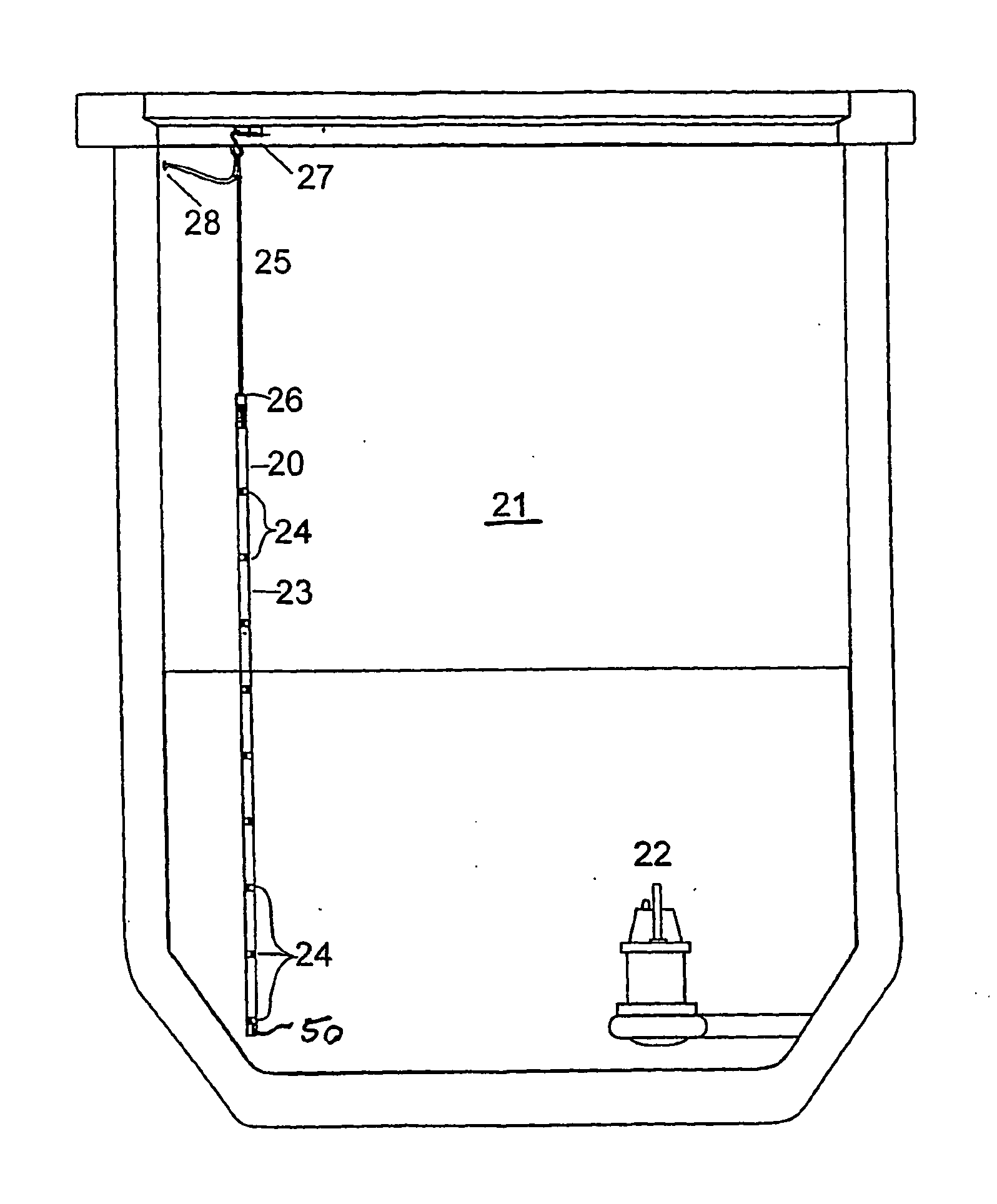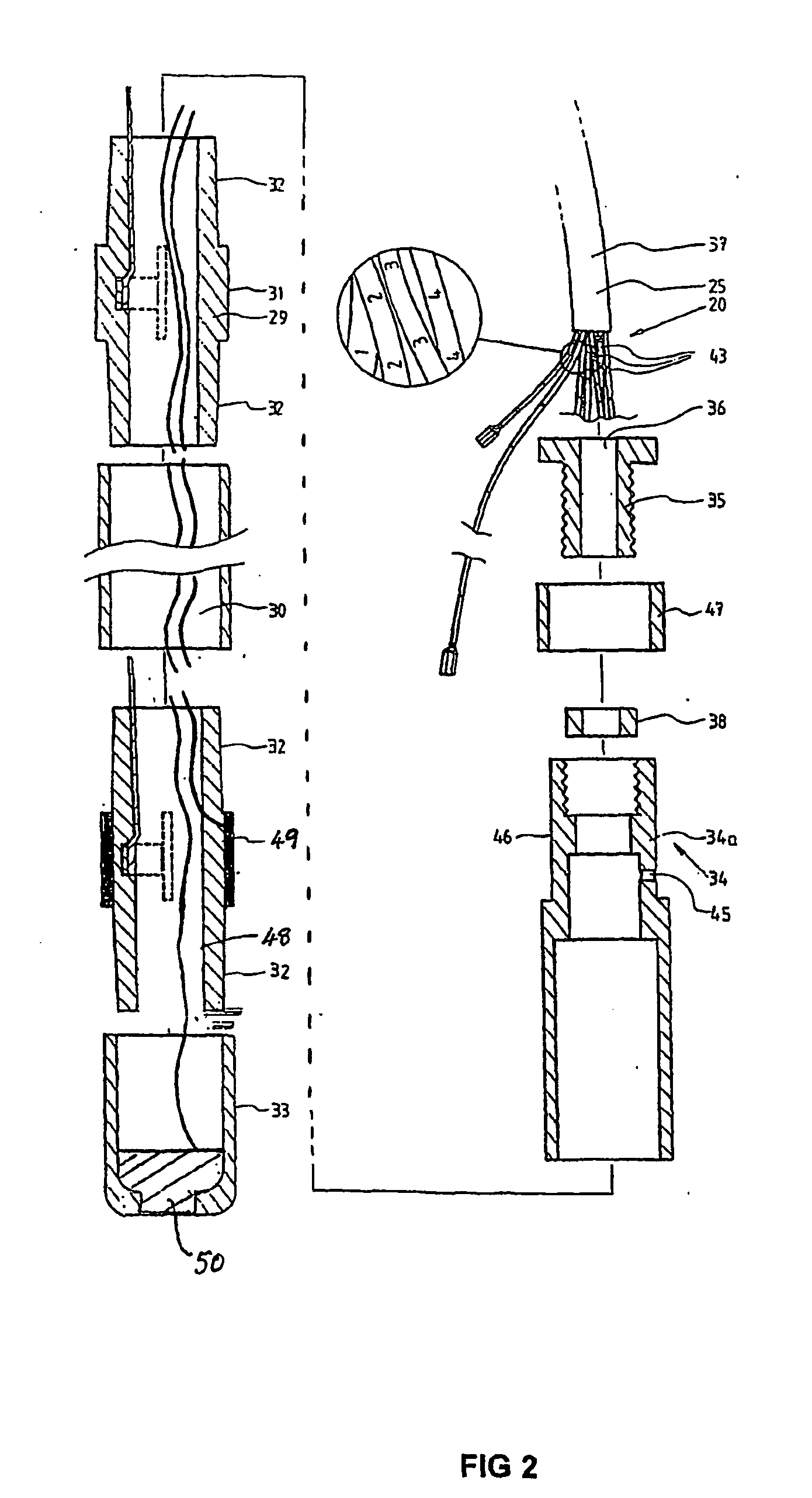Liquid Level Monitoring Apparatus and Methods
a technology of liquid level monitoring and monitoring apparatus, which is applied in the direction of level indicators by pressure measurement, liquid/fluent solid measurement, engine lubrication, etc., can solve the problems of inability to continuously monitor the level output device, the power-down state of the sensors per se may go undetected, and the inhomogeneous nature of the medium of the liquid level sensor in practical applications such as waste water management, so as to improve the accuracy and consistency of time overflow, and the effect of easy
- Summary
- Abstract
- Description
- Claims
- Application Information
AI Technical Summary
Benefits of technology
Problems solved by technology
Method used
Image
Examples
Embodiment Construction
[0084]Referring to FIG. 1 it will be seen that the monitoring assembly 20 may be installed in a sewage pit 21 in which a submersible pump assembly 22 is installed for maintaining the sewage at a desired level. For this purpose the monitoring assembly 20 includes an elongate body 23 formed of plastics material and supporting a plurality of sensors 24 in 10 vertically spaced apart relationship such that the sensors 24 are electrically isolated from one another. In the monitoring assembly 20 in the illustrated embodiments there are provided ten sensors 24. The sensor spacing can be equidistant or spaced at variable lengths. The body 23 may have a diameter of 30 millimetres but of course these dimensions can be varied as desired. Each sensor means 24 is dual-connected to a respective lead of a pair of multi-core cables 25 which are secured sealably to the top end 26 of the monitoring assembly. The cables 25 are supported by an upper mounting 27 adjacent the entrance to the pit 21 and fr...
PUM
 Login to View More
Login to View More Abstract
Description
Claims
Application Information
 Login to View More
Login to View More - R&D
- Intellectual Property
- Life Sciences
- Materials
- Tech Scout
- Unparalleled Data Quality
- Higher Quality Content
- 60% Fewer Hallucinations
Browse by: Latest US Patents, China's latest patents, Technical Efficacy Thesaurus, Application Domain, Technology Topic, Popular Technical Reports.
© 2025 PatSnap. All rights reserved.Legal|Privacy policy|Modern Slavery Act Transparency Statement|Sitemap|About US| Contact US: help@patsnap.com



